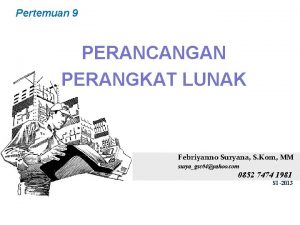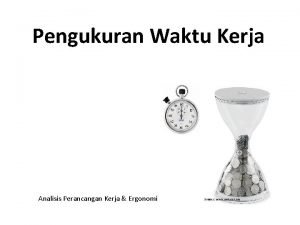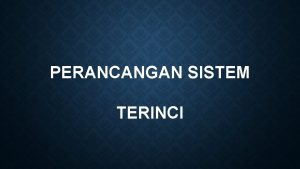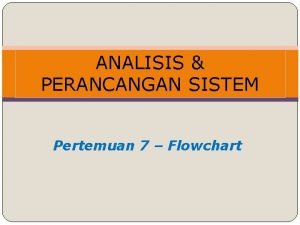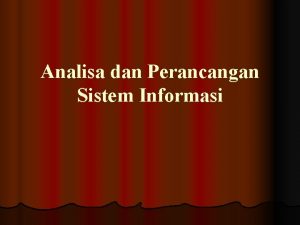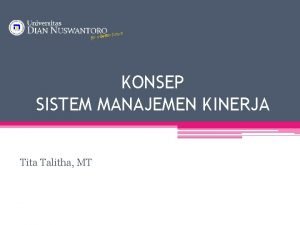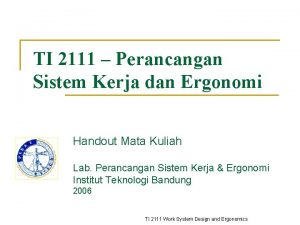Matakuliah D 0194 Perancangan Sistem Kerja Ergonomi Pertemuan








- Slides: 8

Matakuliah : D 0194 / Perancangan Sistem Kerja & Ergonomi Pertemuan 11 1

Shiftwork, defined as working other than daytime hours, is becoming an ever-increasing problem for industry. The problem with shiftwork is the stress on circadian rhythms, which are the roughly 24 hours variations in bodily functions in human (as well as other organisms). It could be assumed that night workers would adapt to night work because of the change in work patterns ( Sumber : Niebel& Freivalds, ( 2003 ) 2

There are many ways to organize shiftwork. Typically, a three-system has an early shift from 8 am to 4 pm, a late-afternoon shift from 4 pm to 12 pm, and night shift from 12 pm to 8 am. However, in many companies, the night shift is mainly a maintenance shift with limited production. In that case, a full crew is not needed, and it may be simpler to rotate only the early and lateafternoon shifts, and operate a smaller, fixed night shift, which can be staffed primarily by volunteers who can better adapt to that shift ( Sumber : Niebel& Freivalds, ( 2003 ) 3

Scheduling overtime on a regular basis cannot be recommended. However, overtime may be necessary for transient short periods, to maintain production or alleviate temporary labor shortages. In such cases, the following guidelines should be followed : 1. Avoid overtime for heavy manual work 2. Reevaluate machine-paced work for appropriate rest periods or lowered rates. 3. For continuous or long periods of overtime, rotate the work among several workers, or examine alternate shift systems. 4. In choosing between extending a series of work days by one or two hours versus extending the work week by one day, most workers will opt for the former, to avoid losing a weekend day with the family. ( Sumber : Niebel& Freivalds, ( 2003 ) 4

Most injuries are the result of accidents caused by unsafe condition, an unsafe act, or combination of the two. The unsafe condition is related to the physical environment, which involves the equipment used and all of the physical conditions surrounding the workplace. For example, hazards can stem from lack of guarding or inadequate guarding for the equipment, the location of machines, the condition of storage areas, or the condition of the building ( Sumber : Niebel& Freivalds, ( 2003 ) 5

Color and the danger signs should be used throughout, to identify hazardous conditions. Companies should furnish protective equipment to employees. Such equipment would include goggles, face shields, helmets, aprons, jackets, trousers, leggings, gloves, shoes, and respiratory equipment. ( Sumber : Niebel& Freivalds, ( 2003 ) 6

The Occupational Safety and Health Act of 1970 was passed by Congress ‘to assure so far as possible every working man and woman in the Nation safe and healthful working conditions and to preserve our human resources’. Under the act, the OSHA was created to : 1. Encourage employers and employees to reduces workplace hazards and to implement new or improve existing safety and health programs. 2. Establish ‘separate but dependent responsibilities and rights’ for employers and employees for the achievement of better safety and health conditions. ( Sumber : Niebel& Freivalds, ( 2003 ) 7

3. Maintain a reporting and recordkeeping system to monitor job-related injuries and illnesses. 4. Develop mandatory job safety and health standards and enforce them effectively. 5. Provide for development, analysis, evaluation, and approval of state occupational safety and health programs. Furthermore, the act brings out that it is the employers responsibility to become familiar with standards applicable to their establishments and to ensure that employees have and use personal protective gear and equipment to safety 8
